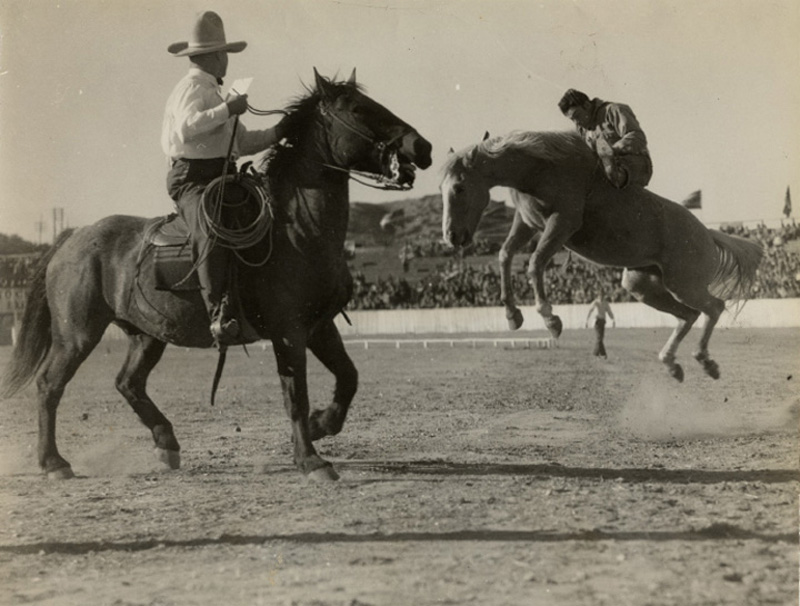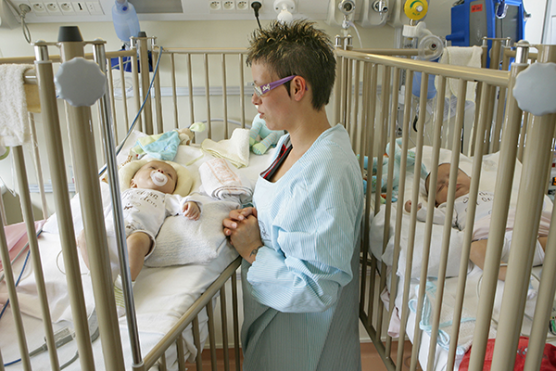As any parent whose baby has spent some time in the hospital knows, all cribs are not created equal. In most cases, hospital cribs (also called pediatric medical cribs) differ significantly from what’s in a child’s bedroom at home.
“Each type of crib is specially designed for safe use in the environment in which it is being used,” says Victoria Wagman, M.A., a senior science health advisor at the U.S. Food and Drug Administration (FDA).
And it’s important that you, as a parent, know how to use these cribs correctly, both in and out of the hospital—especially if your special needs child uses one of these cribs at home.

Caring for Your Child in the Hospital
In the hospital, pediatric medical cribs provide easier access to sick or special needs babies who are hooked up to medical devices or otherwise need frequent attention or treatment, most often provided by medical staff. Unlike home cribs, hospital or medical cribs have fixed or movable bed end rails, movable and latchable side rail components, and a mattress designed to fit the crib. Hospital nurses and other staff are well trained in operating these cribs safely.
Often when babies need to stay in the hospital overnight or for several nights, the parents stay there, too. “If your baby has rotavirus, for example, you might be the main caretaker in charge of feeding or constant diaper changing throughout the night,” says Joan Ferlo Todd, R.N., M.S. a senior nurse consultant at FDA.
“If so, you need to ask the nursing staff to train you in the proper use of pediatric medical cribs,” she adds.
Among other things, Todd explains that parents whose children are using hospital cribs in either setting need to become skilled in the safe use of the crib and comfortable with: latching, locking and opening side rails; raising and lowering the side; raising and lowering the mattress; angling the mattress if necessary; and locking and unlocking the wheels.
“If you are switching off with another caregiver, make sure that person is also proficient in using the crib correctly,” Todd says. If the other caregiver is much taller, for instance, knowing how to raise and lower the mattress can be essential, both for the baby and for the caregiver, who doesn’t want to add back injury—a common problem among caregivers—to the mix.
Caring for Your Child in the Home
New safety requirements for pediatric medical cribs:
Medical Crib New Safety Features: movable and latchable side rails allowed, stronger slats placed closer together, improved safety labeling, less flammable tighter fitting mattress
Get this high-resolution graphic on Flickr.
The same goes if you have bought a pediatric medical crib for use at home. While these cribs are currently available from manufacturers, a new FDA regulation requires that they be prescribed by a physician for home use. FDA first proposed this regulation in December 2015; the rule will become final on January 18, 2017.
“Parents with sick children should evaluate the risks and benefits of using a pediatric medical crib in their private home and discuss whether it is medically necessary with their child’s health care professional,” Wagman adds.
If your doctor ever prescribes a pediatric medical crib for home use, it’s important not to continue to use the crib once your baby is well, or to use it for another child. “Just as you would not give your child’s prescription drug to a sibling, do not use the prescribed pediatric medical crib for the other child’s care,” Todd says.
By the same token, if you find your daycare facility is using a pediatric medical crib for your child who does not have special needs, make sure your child is transferred to a non-pediatric medical crib.
“Healthy kids are ingenious at pushing latches and accidentally lowering side rails,” Todd says. “Pediatric medical cribs should be used only with sick children who need easy access from the caregiver.”
Regulating Pediatric Medical Cribs and Medical Bassinets for Safety
Just as equipment including wheelchairs and walkers are considered medical devices and are regulated by FDA, so too are pediatric medical cribs and medical bassinets. “For this reason, we are requiring these cribs and medical bassinets to be physician-prescribed for use at home,” Wagman says. Cribs and bassinets intended to be used for non-medical purposes at home are considered consumer products and are regulated by the Consumer Product Safety Commission (CPSC).
In 2011, CPSC prohibited the making or selling of drop-side rail cribs intended for non-medical purposes. Children had been suffering frequent injuries, including entrapment and strangulation due to slat and side rail disengagement. CPSC instituted rules to improve slat strength, make hardware stronger, prohibit traditional drop sides, improve mattress support durability, and make safety testing more rigorous.
Since that time, the FDA has conducted a comprehensive review of the best available data on pediatric medical cribs and medical bassinets.
Because drop-side rails are extremely helpful for patient care inside and outside of hospitals, FDA’s new regulation clarifies that pediatric medical cribs — if physician-prescribed — can have the drop-side rail design and be used outside of hospitals. In addition, the regulation establishes standards for spacing between crib slats, improving the quality of hardware and crib testing, and providing information about safe use of the crib on the warning label.
Similarly, the regulation requires that medical bassinet manufacturers conduct performance testing to ensure medical and structural stability. Bassinets must also bear warning labels about how to avoid tipping and care for the device.
“Many hospitals are already using cribs and bassinets that meet the FDA’s proposed standards,” says Wagman. “But we need to be sure that every pediatric medical crib and bassinet is engineered specifically for child safety.”
This article appears on the FDA’s Consumer Updates page, which features the latest on all FDA-regulated products.
Like this:
Like Loading...
Related





 Tweet This
Tweet This Facebook
Facebook Digg This
Digg This Bookmark
Bookmark Stumble
Stumble RSS
RSS



























REAL NAMES ONLY: All posters must use their real individual or business name. This applies equally to Twitter account holders who use a nickname.
0 Comments
You can be the first one to leave a comment.